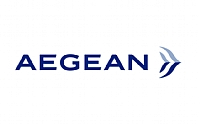IATA - Healthy Passenger Demand in November

Geneva – The International Air Transport Association (IATA) announced global passenger traffic results for November 2014 showing a continuation of the healthy demand trend of recent months. Total revenue passenger kilometers (RPKs) rose 6.0% compared to November 2013, which was ahead of the 5.7% year-over-year growth recorded in October as well as the 10-year average growth rate of 5.6%. November capacity expanded by 5.4%, leading to a 0.5 percentage point rise in the load factor to 76.7%. Growth was driven primarily by domestic markets which experienced a 6.9% increase in demand over the previous November (an acceleration over the 5.3% year-to-date average for domestic travel). Chinese domestic travel (which rose 15.4% over the previous November) was the main contributor to this growth.
|
YTD 2014 vs. YTD 2013 |
Passenger Traffic Growth |
|
|
|
International |
6.1% |
|
|
|
Domestic |
5.3% |
|
|
|
Total Market |
5.8% |
|
|
International Passenger Markets
November 2014 international passenger demand was up 5.4% compared to the year-ago period, which was below the 6.1% year-to-date growth trend.
- European carriers’ demand for international services rose 5.6% in November 2014 compared to the year-ago period in spite of the region’s economic frailties and risks. Robust travel on low cost carriers is behind much of the growth. Capacity climbed 4.9% leading to a 0.5 percentage point rise in the load factor to 77.7%.
- Asia-Pacific airlines recorded a 4.9% demand increase compared to November 2013 amid signs of a slowdown in regional production activity. Trade volumes have remained strong, however. With capacity up 5.6%, the load factor slipped 0.5 percentage points to 74.6%.
- North American airlines saw demand rise 2.0% over the 2013 period. This was an improvement over growth of 1.6% in October. November capacity rose 3.1%, causing load factor to fall 0.8 percentage points to 76.8%. The US economy is a notable bright-spot among developed economies, and recent gains in trade volumes bode well for business-related travel.
- Middle East carriers had the strongest traffic growth at 11.7%. This was the fourth consecutive month of double-digit year-over-year growth and the region’s economies are comparatively well-placed to withstand plunging oil revenues. Capacity rose 13.9% and load factor fell 1.4 percentage points to 70.1%.
- Latin American airlines experienced a 4.9% rise in demand in November. Capacity increased 5.7% and load factor fell 0.6 percentage points to 78.8%. Despite the decline, the load factor was the highest for any region. Although major economies in the region have been weak, the strength of the US economy has supported traffic carried by the region's airlines.
- African carriers were the only ones to see a decline in demand: November traffic fell 2.5% compared to the same month in 2013. Capacity fell 3.1%, causing load factor to rise 0.4 percentage points to 63.8%, the lowest for any region. Passenger volumes for the region’s carriers are back at late 2012 levels.
Domestic Passenger Markets
Demand for domestic travel rose 6.9% in November 2014 compared to the year-ago period, an acceleration of the October increase of 5.9%. Total domestic capacity was up 4.5% and load factor climbed 1.7 percentage points to 79.3%.
- China’s domestic traffic soared 15.4% compared to November 2013, the strongest performance for any market. In fact, two-thirds of the total increase in domestic RPKs over the last few months is attributable to gains in the Chinese domestic market. This is occurring in spite of ongoing signs of a slowdown in the Chinese economy and industrial activity, although consumer surveys and retail sales data remain robust.
Australia’s domestic demand was virtually flat year-over year and traffic volumes have largely remained stagnant since mid-2013. The economy is struggling to rebalance away from mining investment-led growth.






































































































